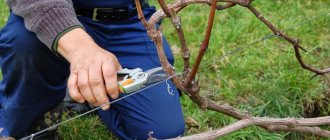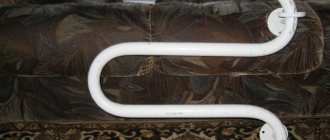Introductory information
Even before you start playing your first passages, chords and songs on the guitar, it is worth learning how to tune it. Then the guitar will sound smooth, all the harmonies will be in harmony with each other, the chords and scales will be exactly as they should be. There are several ways to tune the strings of a six-string guitar, and that's what this article is about. It is worth noting that almost all of the methods listed below are suitable both for those who want to set the instrument in standard tuning, and for those who like to build it in Drop or lower, but based on the quart sound.
How to tune a classical guitar?
Not only beginners, but also quite experienced guitarists are from time to time tormented by purely technical questions: how to replace a string on a guitar if it’s broken, or how to tune a completely new guitar if you forgot to do it right in the store, or if it’s out of tune after lying around for a couple of months without causes?
Musicians face such problems all the time, so you can prepare yourself for them in advance. Today we’ll talk about how to tune a classical guitar in various ways so that everything with our favorite instrument is ok!
How to properly replace guitar strings?
Before changing a string on your guitar, make sure that the mark on the bag matches the string you are going to change.
- Insert the string into the small hole on the soundboard stand. Secure it by making a loop.
- Secure the other end of the string to the appropriate peg. Insert its tip into the hole and rotate the peg in the direction in which the other strings are already stretched. Please note: the strings on the fingerboard or near the pegs should not overlap each other in any place.
- Tune your guitar. Let's talk about this later.
Basic Concepts
The pegs are where the strings are attached and where you turn them to tune them.
Harmones are overtones that can be produced by simply touching the strings at the fifth, seventh and twelfth frets. In order to play them, you just need to put your finger on the string in the area of the nut, without pressing it, and pull. A very high sound will be heard - this is a harmonic.
A tuner is a special program that reads its amplitude by air vibrations around a string and determines the note it produces.
Guitar tuner
In the age of technology, it would be strange if there was no gadget for tuning a guitar. But it exists and there are just a lot of options. Not only is this a very convenient thing, it is also very cheap.
This is a small clothespin that attaches to the headstock, i.e. to the place where the pegs are on the guitar. There is a sensor in the clothespin that detects sound vibrations coming from the strings. Thanks to this, the tuner does not pick up external noise.
We will look at what these strange letters on the screen are, but for now I want to please you. The cost of this miracle on AliExpress is only $3. In music stores, such tuners are sold many times more expensive. I recommend purchasing it if necessary. It will come in handy, I use this myself. It's better to buy in this store .
Standard guitar tuning
Standard tuning is called as such because this is how most classical guitar pieces are played. It's very easy to pluck most chords, so modern musicians mostly use it either as is or with its note distribution logic. It looks like we wrote above:
1 – designated as E 2 – designated as B 3 – designated as G 4 – designated as D 5 – designated as A 6 – designated as E
All of them are tuned to a fourth, and only the fourth and fifth form a diminished fifth between themselves - another interval. This is also due to the fact that some pieces are easier to perform this way. This is also important when tuning your guitar by ear.
Guitar tuning: take care of your hearing from a young age (part 1)
Hi all!
Today in the tips I decided to write a post on how to tune a 6 string guitar.
Every day, when I sit down with my guitar, the first thing I do is tune it. Over the years of playing the instrument, it has become an automatic action - like buckling up while driving or brushing your teeth in the morning. And now any deviation from the tuning of any string hurts my ears, and my hands naturally reach out to twist the pegs - to restore order. I remember when I first started playing the guitar, I often neglected this action, my soul was eager to play, pick up and learn what the tuning was.
I can’t understand how my ears could stand this – listening to an out-of-tune guitar playing for hours. Later, the tutor instilled in me this habit of checking the tuning of the guitar first.
And in general, I think it’s useful to listen to the guitar when tuning. Feeling the vibrations of the sound of the strings, feeling the unison of the sound, you merge with the guitar - become one.
Okay enough poetry, let's get down to business: how to tune a 6 string guitar!
What do we need to set up? Firstly, a guitar, no matter whether it’s an acoustic, classical or electric guitar (here we read how to choose the right guitar). You can use nylon or metal strings, preferably new ones. You can read about how to install strings on different types of guitars here: how to string a guitar. A tuning fork (preferably “E”), or a digital or software tuner will also come in handy, or if you don’t have a computer or a tuning fork, you can get by with a telephone beep (the sound frequency when off-hook is 440 Hz, similar in sound to the note “A”) . Thus, we need a standard of some note. If you have an electric guitar amp or effects processor, then most likely there is a built-in tuner for tuning! Let's go in order.
Standard guitar tuning
Let's look at the most famous configuration method. I think the picture shows everything clearly.
Let's say we have a tuning fork "E", which corresponds to the sound of the first open string E4. We tune the first open string using our tuning fork! Further:
The 2nd string, clamped at the 5th fret, should sound in unison with the 1st open, the 3rd string, clamped at the 4th fret, should sound in unison with the 2nd open, the 4th string, clamped on the 5th fret, should sound in unison with the 3rd open, the 5th string, clamped on the 5th fret, should sound in unison with the 4th open, 6th string, clamped on the 5th fret, should sound in unison with the 5th open note.
Schematically it looks like this - numbering the frets from top to bottom. The black dots are the frets that we are clamping.
This is probably the simplest and most likely well-known way to tune any six-string guitar. When I started playing guitar, I used this tuning method for a very long time and the question of how to tune a 6-string guitar did not arise.
Tuning by harmonics
Today I use this method, and for me the setup is quite fast. To do this, you need to be able to play natural harmonics on the 12th fret - these are probably the most sonorous harmonics of all those available on the guitar. I wrote a little about harmonics here: Pack of cigarettes - analysis. Let's assume that the first string has already been tuned to the tuning fork "E". Further:
2nd string: harmonic on the 12th fret, should sound in unison with the 1st string clamped on the 7th fret, 3rd string: harmonic on the 12th fret, should sound in unison with the 2nd string clamped on the 8th fret, 4th I string, harmonic on the 12th fret, should sound in unison with the 3rd string clamped on the 7th fret, 5th string, harmonic on the 12th fret, should sound in unison with the 4th string clamped on the 7th fret, 6th string , a harmonic on the 12th fret, should sound in unison with the 5th string clamped on the 7th fret.
At first glance it is quite difficult, but this is only at the beginning. Why do I use this particular method? Firstly, the harmonic plays for quite a long time, which allows you to tune in faster. Secondly, it is very convenient for an electric guitar equipped with a machine - Floyd Rose tuning helps. Although I also use this method on acoustic guitars! Let me present it schematically: the frets that we clamp when tuning.
Ways to tune guitar strings
Fifth fret method
This is probably the most difficult way to tune a guitar, and the least reliable, especially if you don't have a very well-developed ear for music. The main task here is to correctly construct the first string , E. A tuning fork or a sound file with the correct sound can help with this. By ear, make the guitar sound in unison with the file, and proceed to further tuning.
1. So, pinch the second string at the fifth fret and simultaneously pluck it and the still open first. They should sound in unison - that is, give one note. Tighten the tuning pegs until you hear the sound you want - but be careful, as you may overdo it and end up having to re-string your guitar.
2. After this, on the fourth, pinch the third string, and it should sound the same as the open second. The same thing happens with tuning the third through the second - that is, clamp the fourth fret.
3. All other strings should sound the same at the fifth fret as the open string before the tuned one.
And the most interesting thing is that this principle remains the same even if you lower the entire scale by half a step, or even by one and a half steps. However, you shouldn’t rely entirely on your ears – but you can tune the instrument approximately without a tuner.
Tuning a guitar using a tuner
The simplest and one of the most reliable configuration methods. To do this, simply turn on the device and pull the string so that the microphone picks up the sound. It will show which note is currently being played. If it is lower than what you need, then twist the peg in the direction of tension; if it is higher, then loosen it.
Setup via phone
Both Android and iOS devices have dedicated guitar tuning apps that work just like a regular tuner. It is recommended that every guitarist download them, because in addition to directly working through a microphone, they contain tips on how to tune the instrument to other tunings.
Using guitar tuning software
In addition to portable devices, PCs also have a lot of different software for guitarists. They operate in different ways - some are like regular tuners via a microphone, others simply give the desired sound, and you have to tune it by ear. One way or another, they work the same way as mechanical tuners - you just need at least some kind of microphone to tune an acoustic guitar.
Tuning with harmonics
Another method of tuning an instrument by ear. It is also not very reliable, but it allows you to tune the guitar much faster than using the fifth fret method. It happens like this:
As mentioned above , the harmonic can be removed by touching the string with the pad of your finger directly above the fret, without pressing it. You should get a high-pitched, non-rattley sound that doesn't go away when you put your finger down. The trick is that certain overtones should sound in unison on two adjacent strings. One way or another, if the guitar is completely out of tune, then one of the strings will still have to be tuned using a tuning fork or by ear.
The principle is this:
- The base is the harmonic on the fifth fret. It should always be used.
- The harmonic on the fifth fret of the sixth string should sound in unison with the harmonic on the seventh fret of the fifth.
- The same applies to the fifth and fourth.
- The same applies to the fourth and third
- But the third and second question is a little different. In this case, on the third string, the harmonic should be removed on the fourth fret - it will be a little muffled, but the sound will still come out. For the second, the process does not change - the fifth fret.
- The second and first strings are tuned standardly according to the fifth-seventh ratio.
Tuning via online tuner
In addition to programs, a lot of online services for tuning a 6-string guitar are appearing on the Internet, freeing you from the need to download third-party software. Below is one of these online tuners with which you can easily tune your instrument.
How to tune a guitar's pitch?
Despite the fact that this stage is usually the final stage in the overall cycle of tuning a musical instrument, we have placed it at the top of our article due to the particular popularity of this issue among musicians.
We will tell you about several ways to tune the instrument to standard E tuning: they will help those musicians who do not have a tuner for tuning an electric guitar or a microphone for tuning an acoustic guitar.
Guitar tuning online
One of the popular options is online instrument tuning - fortunately, now you can find dozens of services that will play you the note of the desired pitch online until you tune the guitar.
Also, some sites have built-in full-fledged tuners that pick up sound either from your webcam's microphone or through the mic/line input on your sound card.
Tuning a guitar with a piano or synthesizer
If you have popular keyboard instruments such as a piano, piano or synthesizer, then the setup process will be no less simple. Look at the picture below: We have marked the location of the notes corresponding to the six open strings of the guitar. Pay attention to the key highlighted in red - this is C (C) of the first octave.
Tuning a guitar using a tuning fork
A tuning fork is a device that produces only one sound in pitch. This sound corresponds to the note A with a frequency of 440 Hz - this is exactly the pitch of the note that should be on the 5th fret of the first string.
- So, we start by tightening or loosening the string with the help of pegs, achieving a unison sound of the tuning fork and the 5th fret of the 1st string;
- Next, we tune the second string: the 5th fret of the second string should sound in unison with the open first string;
- The 4th fret of the 3rd string should sound in unison with the open second string;
- The 5th fret of the 4th string should be the same height as the open 3rd string;
- We tune the 5th fret of the fifth string in unison with the unclamped fourth string;
- Finally, the 6th string at the 5th fret should sound in unison with the open fifth.
This method will require slightly more developed hearing than the first two - but even if you don't succeed the first time, don't be discouraged. Try again - after 3-5 tuning sessions you will begin to have a more or less good grasp of the pitch of guitar notes and will be able to tune the guitar very accurately.
Tuning your guitar using a tuner
If you own an electric guitar, an acoustic guitar with a pickup or microphone that can be connected to a computer, or you have a separate guitar tuner, then the tuning process is guaranteed to be as simple and accurate as possible.
The open strings correspond to the following notes from strings 1 to 6: E (Mi), B (B, often designated as H in domestic sources), G (Sol), D (Re), A (A), E (Mi). Accordingly, when tuning with a tuner, we must get as close as possible in height to the required note by loosening or tightening the string at a higher and lower sound, respectively.
A tuner is an extremely convenient and compact accessory that will help you have a tuned instrument outdoors, during travel, concerts and rehearsals, when there is simply no time or opportunity to tune the guitar by ear.
General tips for tuning your guitar's pitch
- Adjust each string's pitch only after tuning all the other elements, which we'll talk about below;
- If precise tuning is observed on open strings, the guitar sounds good at the first frets, but closer to the 12th fret it stops playing - check the scale or take the instrument to a master;
- If you have a tuner, check not only the open string, but also the 5th-7th, as well as the 12th fret for proper tuning;
- Play notes with the pick with the same force that you will play with after tuning - plucking with the pick momentarily increases the tension of the string and the pitch of its sound. In this case, do not focus on the tuner readings that occur at the moment of plucking, but take a short pause until the string takes on natural tension;
- You should not tune your guitar immediately after you brought it from the street: changes in temperature and humidity can affect the tuning, so pause for 10-15 minutes;
- Did you tune the open string exactly to the note? Make a couple of bends on this string and tune again - especially for new strings that will stretch for a while.
What to do if the guitar doesn't stay in tune?
In fact, there may be a lot of problems hidden in this issue. First of all, remove your strings and tighten the pegs with a screwdriver and a special wrench - it is quite possible that they have become loose and that is why the tension goes away quickly.
In addition, the problem may lie in the setup of the guitar neck - it may be too tight, under tightened, or even screwed up. In this case, it is best to contact a guitar specialist rather than repair the instrument yourself.
Tuner for tuning a guitar on your phone
Today there is more than one online service for tuning a guitar. There are also quite a few programs for PCs, for example Guitar Pro allows you to do this. But it is much more convenient to install the application on your smartphone and not depend on the Internet and/or computer.
There are tons of guitar tuning apps for smartphones. But the most complete and advanced among them all was and remains to this day the gStrings guitar tuner. I've been using it for 5 years now.
You can download it from Google Play Market .
Or via direct link : download gStrings [1.7 MB]
After all the changes made by the developers, the application has become maximally adapted to living conditions. You just need to take your phone out of your pocket, open the app and start plucking strings, not necessarily guitar strings. The application is omnivorous and is great for tuning a guitar, as well as for tuning a bass guitar, violin and any other instrument. Even the drums were once pulled up on it.
Self-tuning guitar
This is a guitar that tunes itself
There are guitars that can tune themselves, such as Gibson's "G-Force" system . Such guitars have a special device with 6 motors and a microphone in the pegs area. Through a microphone, the device determines whether the string is tuned correctly or not, and the motors change the tension of the string to the required height.
How to change strings on an electric guitar with Floyd Rose
All you have to do is run your hand over the strings to make them sound, and Gibson's G-Force system does the rest . Prices for a Gibson guitar with the G-force system can reach up to a thousand euros or more.
It is for this reason that many, yes, many, 99% of all guitarists choose the free version of the online tuner, which is in no way inferior to G-Force in terms of guitar tuning quality and at the same time is absolutely free!
Guitar beats and tuning
When you come very close to the desired note and the difference between the notes is very close, so-called beats occur. Beating is the result of a slight difference between two close frequencies that are trying to resonate, but because of the slight difference, the sound is either strengthened or weakened. Graphically it looks like this:
When tuning an acoustic guitar, the beats are not only perceptible by ear, but also clearly felt by the body when touching the soundboard (body) of the guitar. This is especially noticeable on the upper bass strings, due to their thickness and lower sound frequency.
The closer the sounds of two notes correspond to each other (the second string on the fifth fret and the open first), the faster the beats will occur. And when the notes coincide, the beats will stop altogether. You just have to feel it and then you can adjust it without thinking.
By analogy for the other strings. The third string should sound the same as the second open string when plucked at the fourth fret. To tune the 4th, 5th and 6th strings, you should clamp them at the fifth fret and compare their sound with the sound of the previous string.
It turns out that all strings except the third are tuned according to the resonance between them at the fifth fret and the previous string, and the third string is similar, but is clamped at the fourth fret.
Sheet music for guitar tuning
This way you can tune the guitar in reverse order or starting from any string, but there is one weak point in this method. Initially, one of the strings must be tuned from outside. The tuning fork was invented for these purposes. A standard tuning fork produces an A note with a frequency of 440 Hz. Those. This is the first string on the fifth fret.
Especially for you, a 20-second file with the note A (440Hz) produced by a standard tuning fork was created in the Audacity audio editor. Well, at the same time, 20 seconds of the sound of the first string.
Why does the guitar go out of tune?
So far we have discussed how to tune the strings of a guitar, but now let's find out why the strings generally go out of tune, why does the guitar stop being in tune?
In order for the guitar to always stay in tune well, you need to carry out preventive maintenance on time and regularly care for the guitar. There are several factors affecting the tuning of a guitar that can cause a guitar's strings to go out of tune.
Many of them can be easily avoided if you take into account some features. Look at what can cause the guitar to go out of tune and stop being in tune.
Strings and their quality
Strings are often exposed to greasy hands. Therefore, it is advisable to wash your hands with soap before playing. After playing, you should wipe the strings again with a dry, lint-free cloth . If you don't do this, the strings may become corroded, making it difficult to tune the strings later on.
Check out “What are the best strings for an acoustic guitar.”
Using vibrato
Using a lever is also not conducive to good guitar tuning. The mechanism cannot return perfectly to its original position . Even the most expensive copies cannot guarantee a 100% guarantee of maintaining the correct system, let alone budget options.
Temperature changes
Strings are very sensitive to temperature fluctuations . Therefore, metal has the property of contracting at low temperatures (creating a higher tone) and stretching at high temperatures (creating a lower tone).
Strings and their stretchability
After replacing the strings with new ones, the strings will continue to stretch for some time , which will affect the tuning of the guitar. It will take some time for the strings to settle, during which time they will have to be adjusted a little.
Pegs aging
Over time, the mechanism of the pegs begins to “age” and they stop working properly and holding the strings well. As a result, the strings begin to “slip”, which is why they have to be tightened regularly . If the pegs are not replaced, the strings will continue to weaken periodically.
Setting the scale
Even though the open strings are tuned correctly, a chord taken as an example at the 5th fret will sound like an out of tune guitar. This effect occurs due to the fact that the guitar's scale is not tuned .
Guitar tuners: types of tuners, characteristics of tuners, correct choice of tuners
It cannot be said that setting the scale is a very complicated procedure, but nevertheless it requires some skills and if you are not confident in your abilities, it is better to contact a more experienced colleague. I will tell you how to adjust the scale in a separate article, it will appear soon, stay tuned.
Strings and their correct clamping
When you're first learning to play the guitar, you may find yourself plucking the strings too hard or accidentally moving a string up or down - this will also affect the pitch of the sound produced, causing the tone to rise or fall, causing you to hear a false tone.











